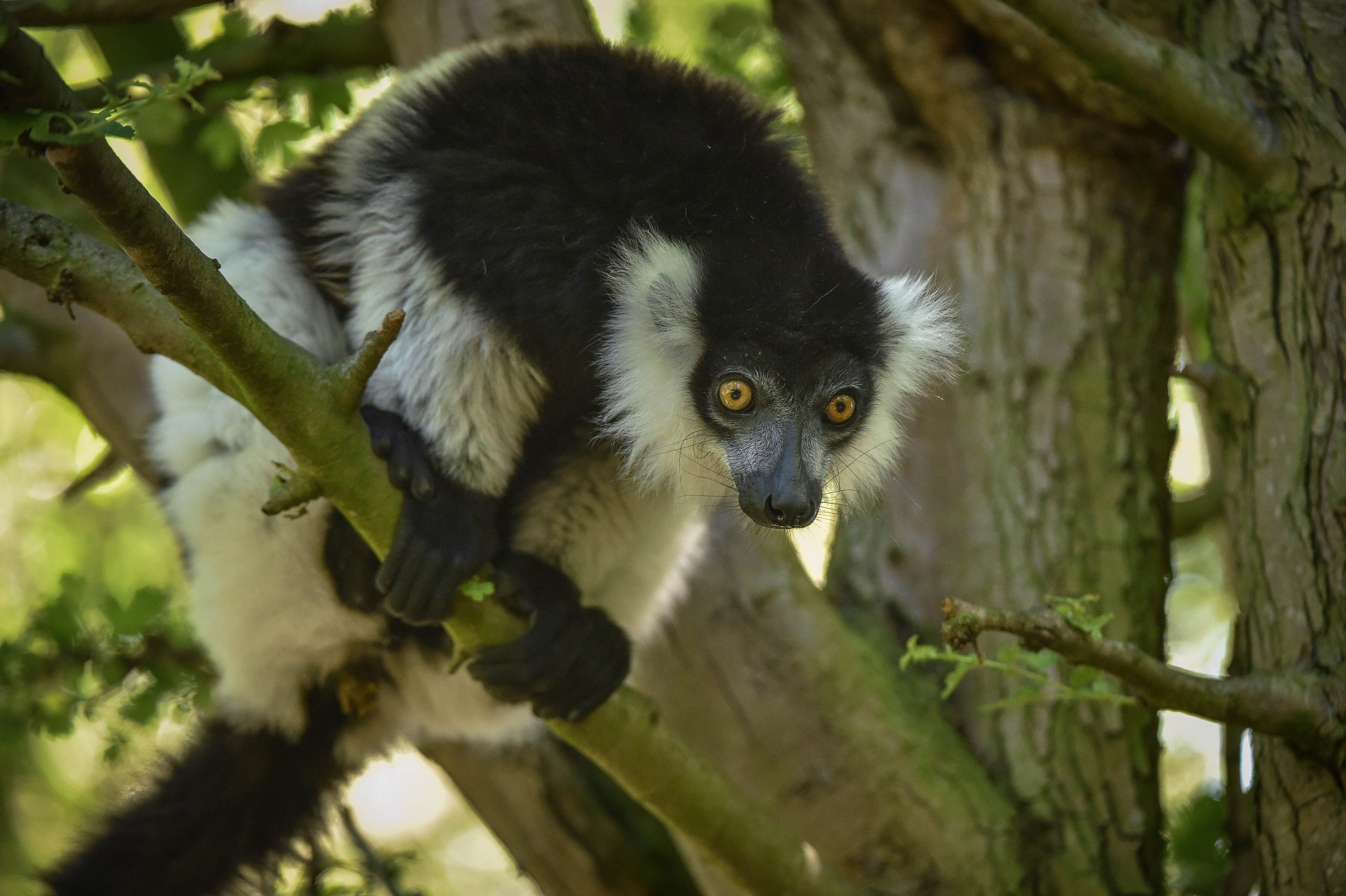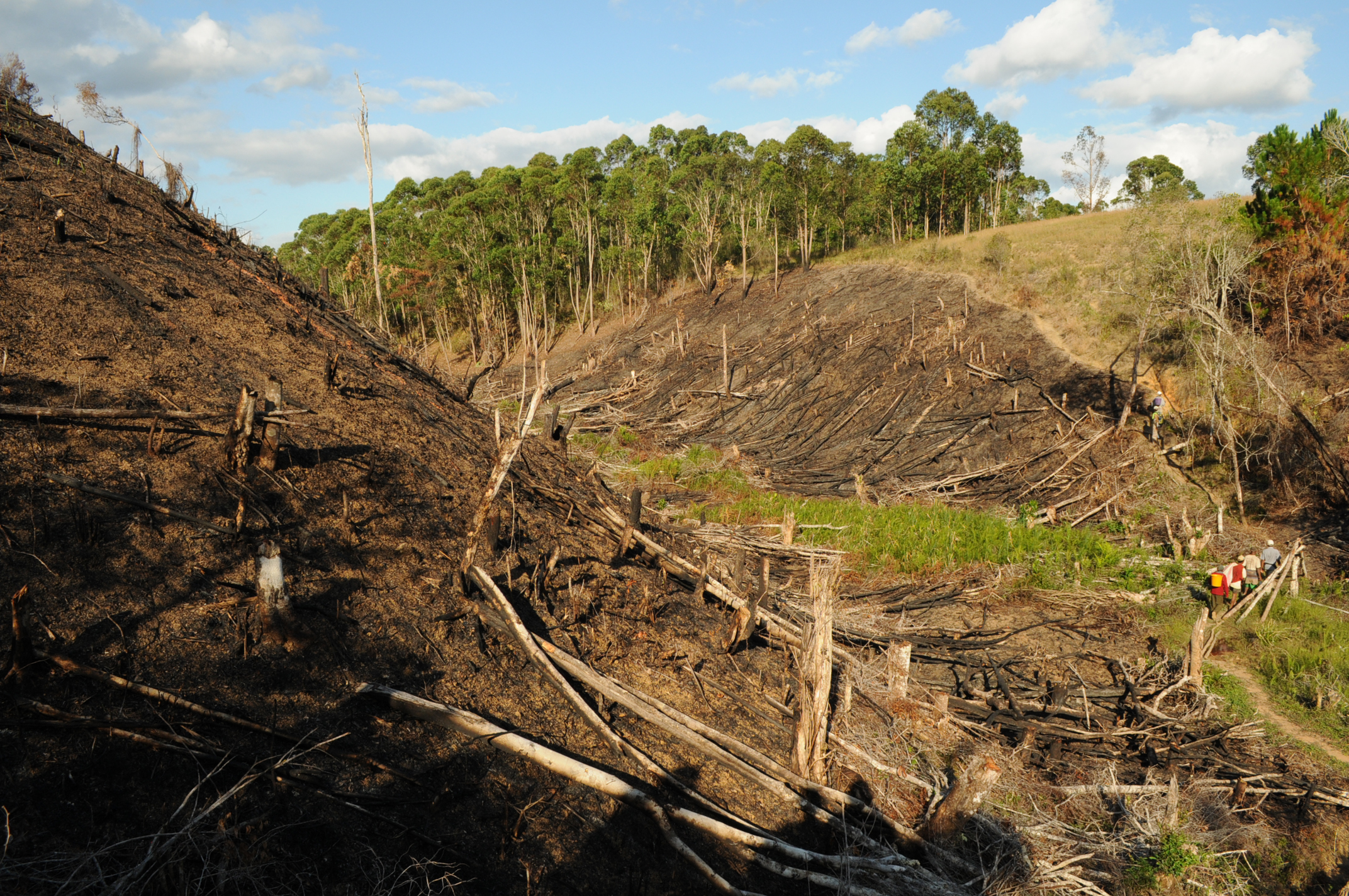In Mangabe, Madagascar, the black-and-white ruffed lemur makes a first appearance after an absence spanning a decade and a half…
The IUCN classifies the black-and-white ruffed lemur Critically Endangered, and for good reason. Despite having a range that spans much of East Madagascar, in reality this range is incredibly fragmented. The lemurs survive in pockets of forest with no realistic possibility for exchange of genetic material between them.
Such a situation puts the lemur at risk of extinction over time, as isolated populations decline or are snuffed out by a change event.
Pictured – White-belted black-and-white ruffed lemur (a subspecies of black-and-white ruffed lemur) here at Chester Zoo.
A life for the lemur in Mangabe
The Mangabe Protected Area was established in 2015 to protect the extraordinary Malagasy endemic biodiversity living within its borders. Included among this mix of species at the time of its creation are three lemurs: the diademed sifaka, the aye-aye and the indri.
No black-and-white ruffed lemur here then? Despite Mangabe being located in the species’ theoretical range. Strange.
The species was in fact present in the region until around 2006. Just under 200km away at this time, the Malagasy conservation NGO “Madagasikara Voakajy” was being established. An organisation that would go on to secure legal protection for Mangabe, and work towards its recovery. Now here in 2022, the situation for black-and-white ruffed lemurs in Mangabe has changed.
Julie Hanta Razafimanahaka, Director of Madagasikara Voakajy, tells us the story.
“I’ve always loved lemurs from a very young age. In fact, it was lemurs themselves that made me want to be a conservationist.
When I was just 13 I went on a trip into the forest to try and see indri lemurs, one of the species with the most beautiful calls. After hours of searching and hiking, finally we came across a group of indri and I was able to listen to the call I was so looking forward to hearing. But I was disheartened to hear from our guide that it was likely the indri would be gone from that place soon due to ongoing deforestation. It made me want to take action to protect them.
Video – An Indri’s call captured in Mangabe. Credit: DDC Madagascar, Tusk Awards.
Today I run a Malagasy NGO, and I’m so proud that our Mangabe Protected Area is home to the three lemur species already.
Long before we achieved protection for Mangabe, we had black-and-white ruffed lemurs here too, one of the most threatened lemur species.
There were two likely reasons for its disappearance. Firstly, as we were interviewing various communities about lemur sightings, many people referred to this species of lemur as “the most delicious lemur”. People in Madagascar have taken bushmeat for centuries and continue to do so today, especially to supplement livelihoods in areas of poverty. We can address the bushmeat issue by lifting communities out of such situations and addressing their needs; it is the other of the two issues that is far harder to tackle.
Pictured – Slash and burn logging is one of the single greatest threats to Mangabe today.
Black-and-white ruffed lemurs are known to prefer big areas of forest with relatively little disturbance. Of course back in the mid 2000’s Mangabe was not yet protected, and we had very high deforestation caused by logging and mining in the area. Sadly this still happens today, but it is now an illegal activity. Our project here is aiming to end that forest loss by empowering communities to become the forest’s guardians.
After all these years, imagine my surprise in 2021 that a group of black-and-white ruffed lemurs had been spotted in Mangabe. Upon hearing the news I sent one of our biologists, Raphali, to investigate, and sure enough he captured photographs to confirm it. The species had returned!
Photo – The first sighting of a black-and-white ruffed lemur in Mangabe in 15 years.
It’ll take some time yet before we can say for sure if the black-and-white ruffed lemur has come back to Mangabe as a permanent resident, rather than an occasional visitor. But their presence is promising, and our monitoring efforts will continue to track them over time. Their situation is delicate as deforestation pressures continue, especially from people outside of Mangabe. The team here, the patrollers that our project has trained, and the authorities we’re working with are all working hard to stop the threats.
Perhaps though the lemur’s return is a sign that our efforts to protect this precious landscape are starting to pay off.



